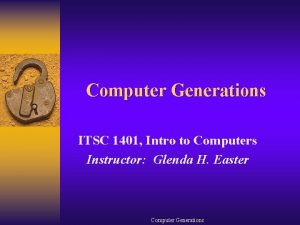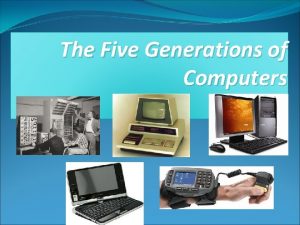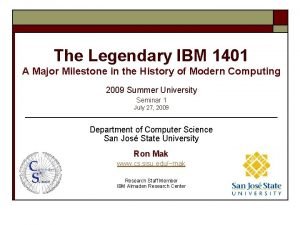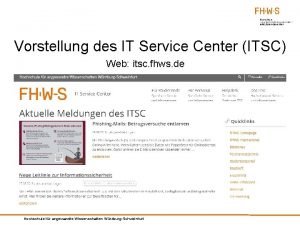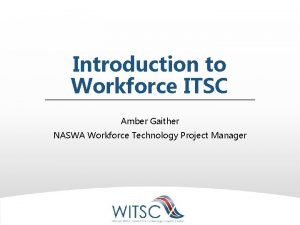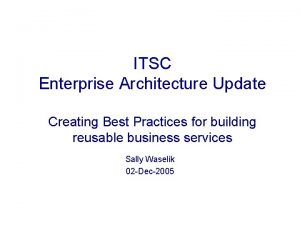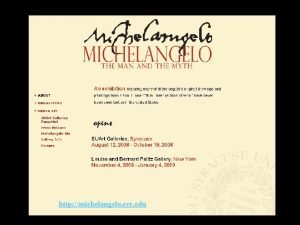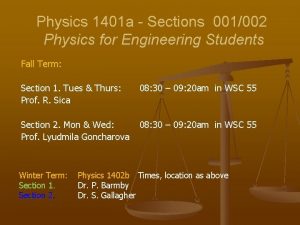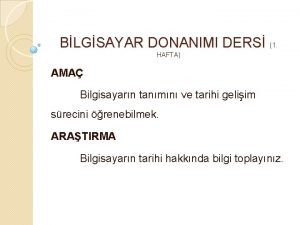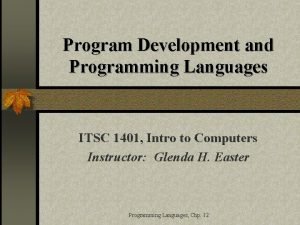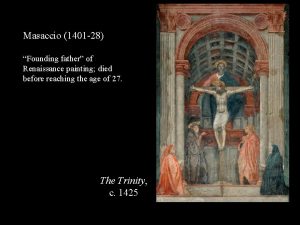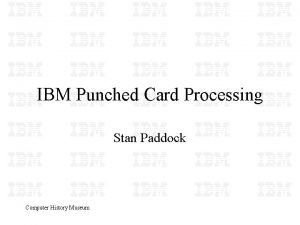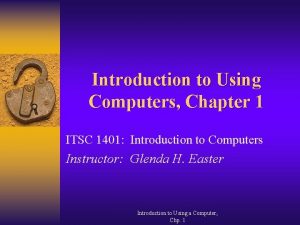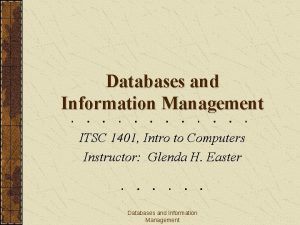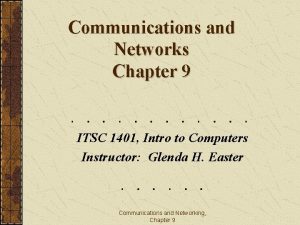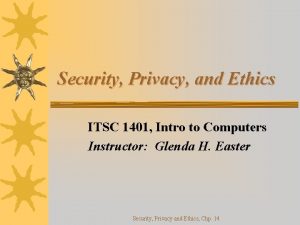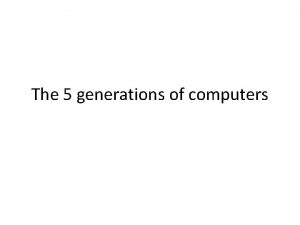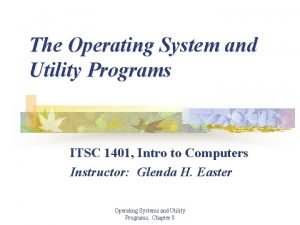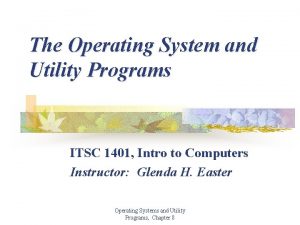Computer Generations ITSC 1401 Intro to Computers Instructor












- Slides: 12

Computer Generations ITSC 1401, Intro to Computers Instructor: Glenda H. Easter Computer Generations

Early Electronic Computers and The Computer Generations ¨ The First Generation (1951 to 1959) Grace res Hopper Ec ker Clifford B t erry John A tanaso ff n o v n h Jo n n a m Neu John Mauchly Ho wa rd Ai ke n J. P Computer Generations 2

First Generation Computers 1951 -1959 ¨ Characterized by vacuum tubes which burned out very rapidly. ¨ The first generation of computers used machine language or 0 s and 1 s. ¨ This generation also used magnetic tape. Computer Generations 3

The Computer Generations (Continued) ¨ The Second Generation (1959 to 1963) Computer Generations 4

Second Generation 1959 -1963 ¨ The second generation of computers used transistors for the internal operations. ¨ They used magnetic core for the memory. ¨ These machines used assembly language. Computer Generations 5

The Computer Generations (Continued) ¨ The Third Generation (1963 to 1975) ce oy N t er Rob Jack St . . Clair Kilby Computer Generations 6

Third Generation 1963 -1975 ¨ These computers used integrated circuits on silicon chips. ¨ They were characterized with high-level programming languages which required logic such as BASIC, Pascal, C, COBOL, and Fortran Computer Generations 7

The Computer Generations (Continued) ¨ The Fourth Generation (1975 to Today) Computer Generations 8

Fourth Generation 1975 -Today ¨ These computers use microprocessor chips. ¨ Object-Oriented Programming (OOP) Languages such as Visual Basic, and JAVA are characteristic of this computer generation. Computer Generations 9

Object Oriented Languages ¨ The new languages are based on a concept called Object-Oriented Programming (OOP) which encourages programmers to reuse code by maintaining libraries of code segments. ¨ These programs are designed to solve specific problems and require little special user training. This includes Query Languages and application generators Computer Generations 10

A Fifth Generation? AI and Natural Languages Computer Generations 11

5 th Generation Still Being Developed ¨ Natural Language ¨ This language is designed to give people a more human connection with computers. ¨ Uses multi-media has also defined this generation. ¨ There is a great deal of “bundled software” with this generation. Computer Generations 12
